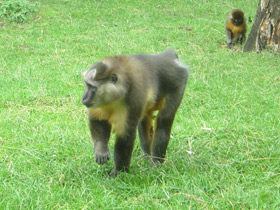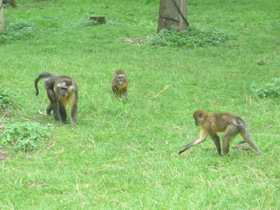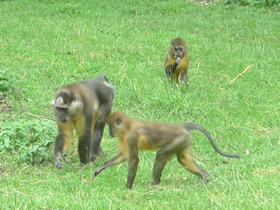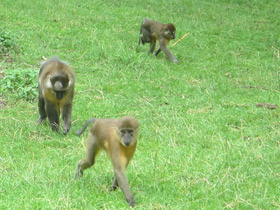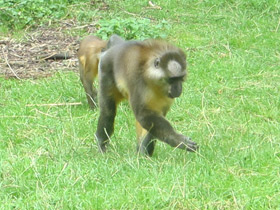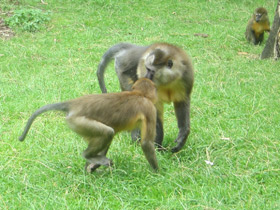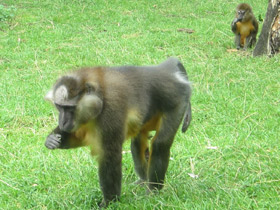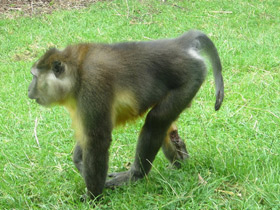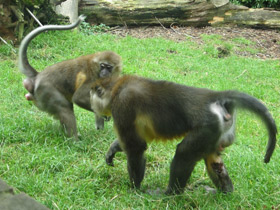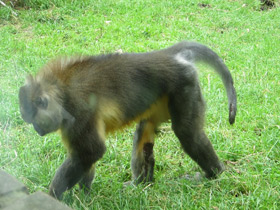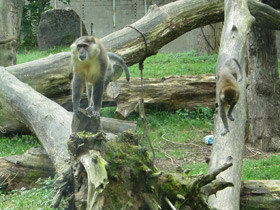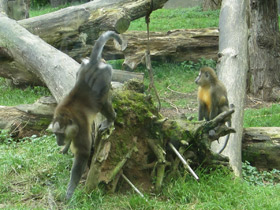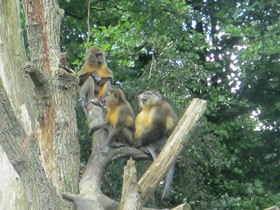The golden-bellied mangabey (Cercocebus chrysogaster)
The golden-bellied mangabey (Cercocebus chrysogaster) is a social Old World monkey found in swampy, humid forests south of the Congo River in the Democratic Republic of the Congo. It was previously considered a subspecies of the agile mangabey (Cercocebus agilis). Little is published about the species and its behaviour has only been studied in captivity.
The only known photograph of golden-bellied mangabeys in the wild is shown in this article and a link to a video can be found in "External links" below.
Habitat
Cercocebus chrysogaster is a species of catarrhine primate of the family Cercopithecidae. Cercocebus chrysogaster is found south of the Congo River in the central Congo Basin and is endemic to the Democratic Republic of Congo. It lives at 500 m above sea level in seasonally flooded lowland and upland rainforests, can inhabit gallery forests and sometimes occurs in secondary forests and in some areas is even an agricultural pest.
Appearance
The body length of Cercocebus chrysogaster ranges from 40-62 cm, with a long tail of 45-76 cm. Males of Cercocebus chrysogaster are noticeably larger than females: their weight varies from 7 to 13 kg, while females weigh 4.5 to 7 kg. The coat colouring of the golden Cercocebus chrysogaster is olive-green or brownish-green on top, the abdomen is yellow or bright orange.
Behaviour and reproduction
The diet of Cercocebus chrysogaster consists of fruits, leaves, mushrooms, seeds, nuts, insects and small birds. Unfortunately, little is still known about the life of these primates. They are diurnal and live in groups with an average of 15 individuals. After a gestation period of 164-175 days, a single offspring is usually born. The longevity of these primates can be up to 30 years.
Threats to existence
The major threats to Cercocebus chrysogaster are uncontrolled hunting (both for meat and for sale) and habitat degradation. The species is listed in CITES Appendix II and in Class B of the African Convention on the Conservation of Nature and Natural Resources.

















